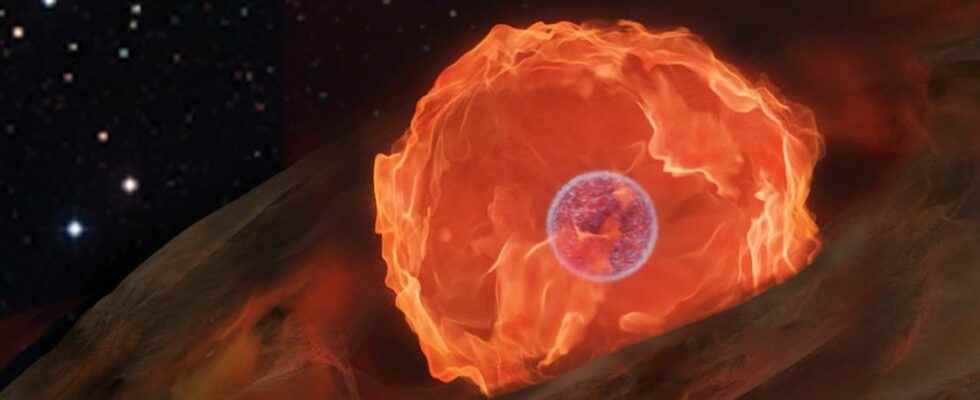Dead stars can sometimes regain a burst of life. White dwarfs, for example. They then appear as new stars in our sky. Novas. And these are the beginnings of such a burst, in the form of a ” fireball “ of X-rays, which astronomers had the good fortune to observe for the very first time.
“A happy coincidence. » This is how Ole König, astronomer at the Friedrich-Alexander-Universität Erlangen-Nürnberg (FAU, Germany), qualifies, in a communicated, the incredible observation he just made with his team. A powerful explosion on the surface of a white dwarf – that the astronomers call nova – and the ” ball of fire » of X-rays who accompanied her. ” Those flashes of X-rays only last a few hours and are almost impossible to predict. The observation instrument must be pointed at the right place at the right time. »
This is exactly what happened with the space telescope eRosita X-ray. A million and a half kilometers from our Earth, he scrutinizes those whom the physicists have been calling soft X-rays since 2019. And on July 7, 2020, he spotted an intense emission in a region of the sky totally ” black “ only four hours earlier. Four hours later, when theeye of eRosita turned again to this region of the sky, there was nothing left.
Such a burst of X-rays had never before been directly observed. The phenomenon was however predicted more than 30 years ago now. The theory is that “balls of fire” of X-rays can be born on the surface ofstars Of type white dwarf. The white dwarfsthese are the remnants of stars comparable to our Sun, once they have run out of fuel. Stars that die while shrinking until they reach a size of the order of that of our Earth.
X-rays to saturation
But the presence of a companion star, very much alive, can succeed in reigniting them. If the white dwarf attracts enoughhydrogen of this star, the gas will accumulate to form a surface layer only a few meters thick. But a layer in the heart of which the gravitational attraction is so strong that the pressure generated restarts the mechanism of the white dwarf. A colossal explosion ensues during which the layer of hydrogen is blown away.
Make no mistake about it. The phenomenon is far from rare. From explosions in novae happen all the time. What is exceptional is to have been present at the very beginning of the process. When most of the x-rays have been emitted. ‘Cause the flash is short duration, we mentioned above. But the soft X-rays that are emitted are also low in energy. They tend to be absorbed by the interstellar medium. The phenomenon thus escapes all instruments designed to observe harder X-rays.
We wondered if it was real
“In the eRosita data, we were looking for a show that was still powerful. But this one was so real that we wondered for a while if it was real., remembers Riccardo Arcodia, astronomer at the Max-Planck Institute (Germany). The telescope picked up so many X-rays that its detectors were saturated. But the astronomers have nevertheless managed to exploit the overexposed image. They thus advance that the white dwarf in question has approximately the mass of our Sun. It is therefore relatively large. The explosion generated a ” fireball “ at a temperature of some 327,000°C. In other words, a ” fireball “ sixty times hotter than the surface of the Sun.
Note that these novae still quickly run out of fuel again. They cool very quickly. Then the X-radiation weakens and ends in light visible. A visible light which, half a day after the observation of eRosita was observed from Earth in the form of an apparently so bright star – this light was in reality no other, you will have understood it, than that emitted by the explosion – that it could be seen with the naked eye. In a constellation ofsouthern hemispherethe constellation Reticule.
Interested in what you just read?
